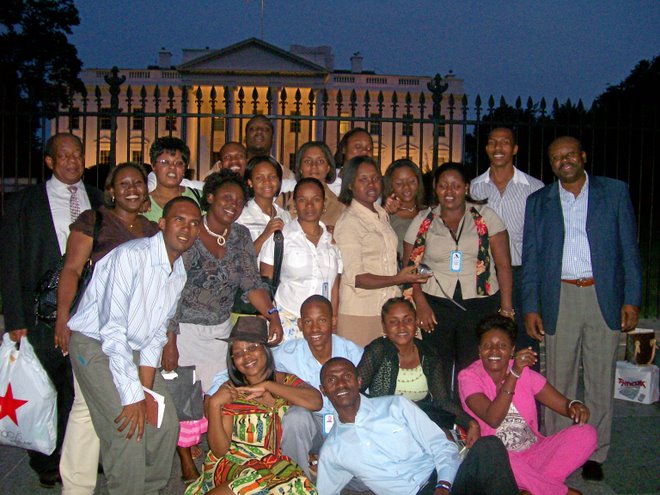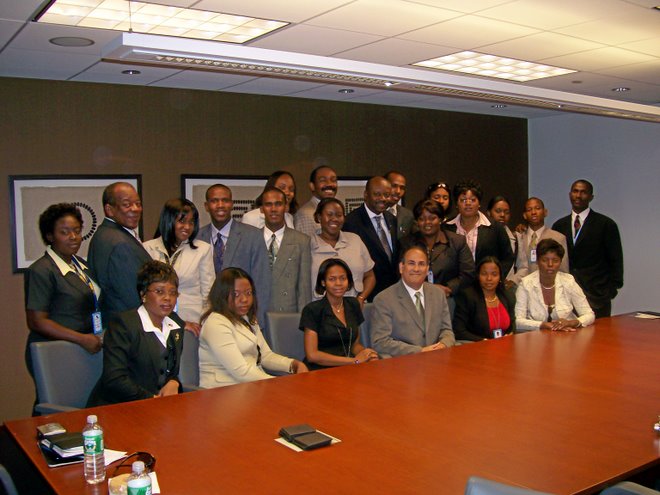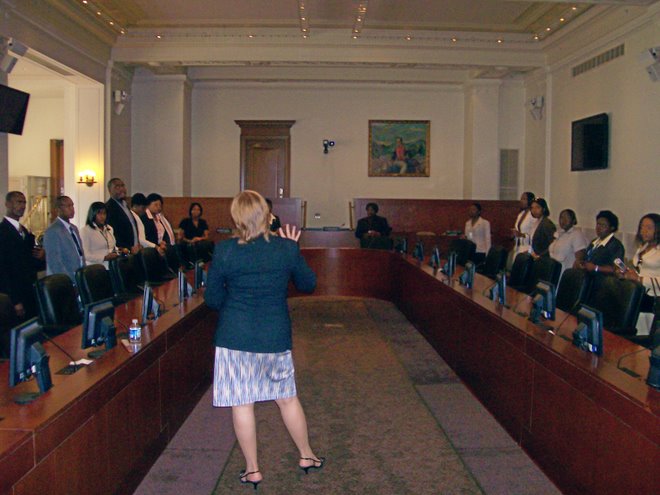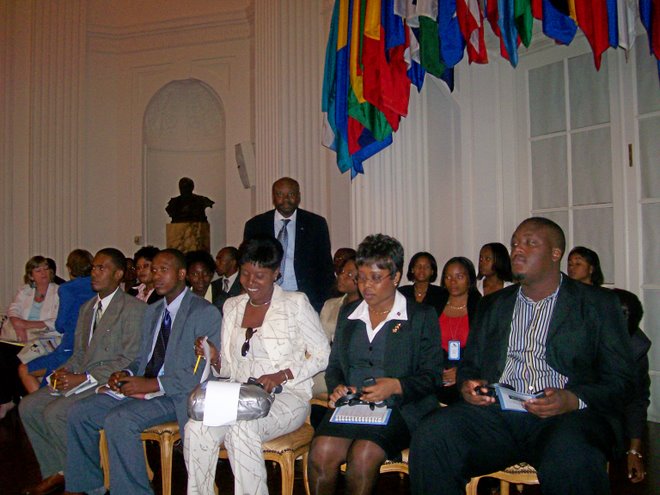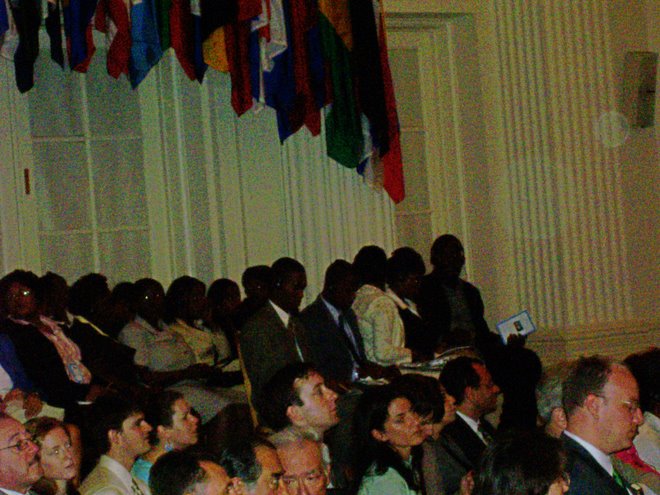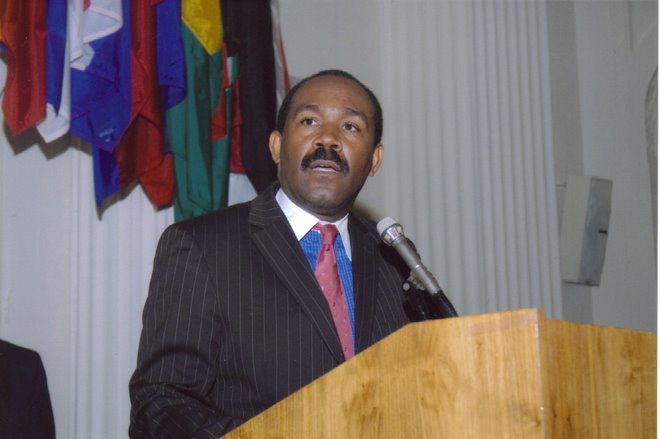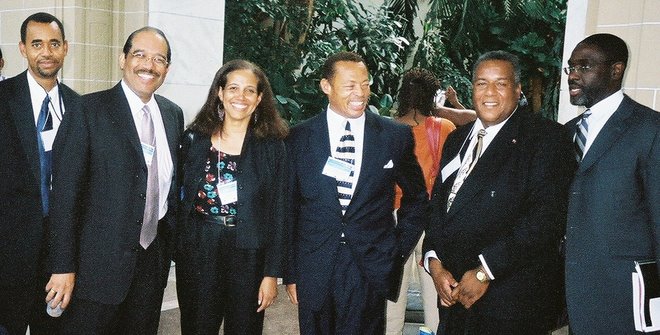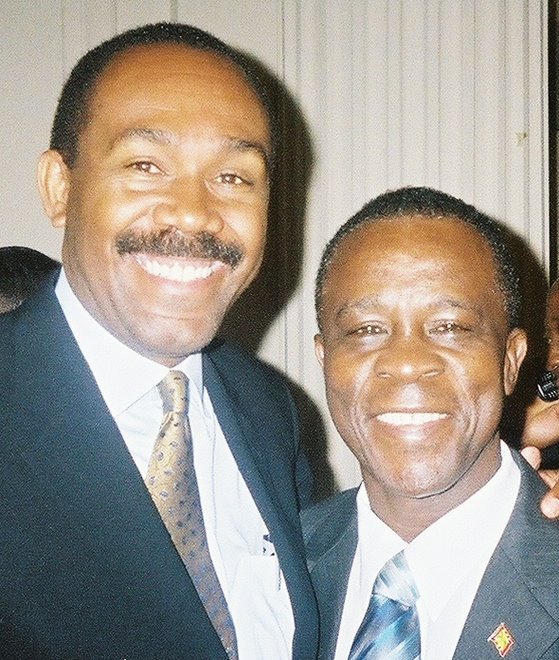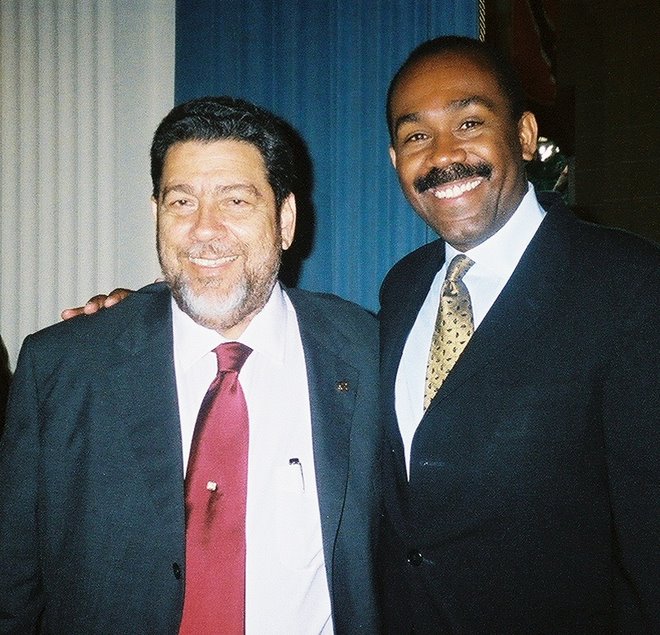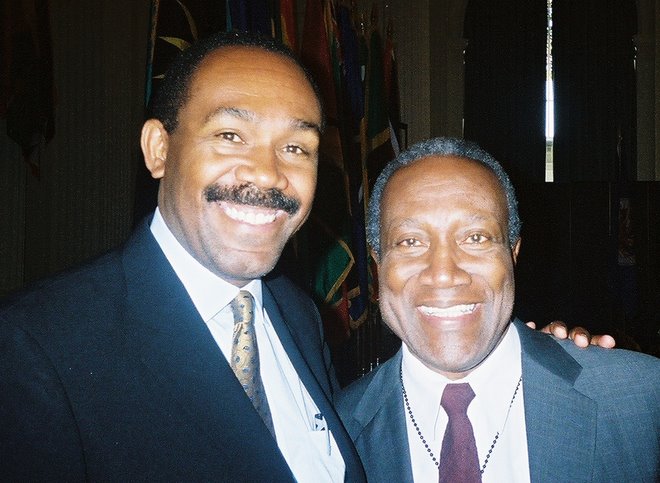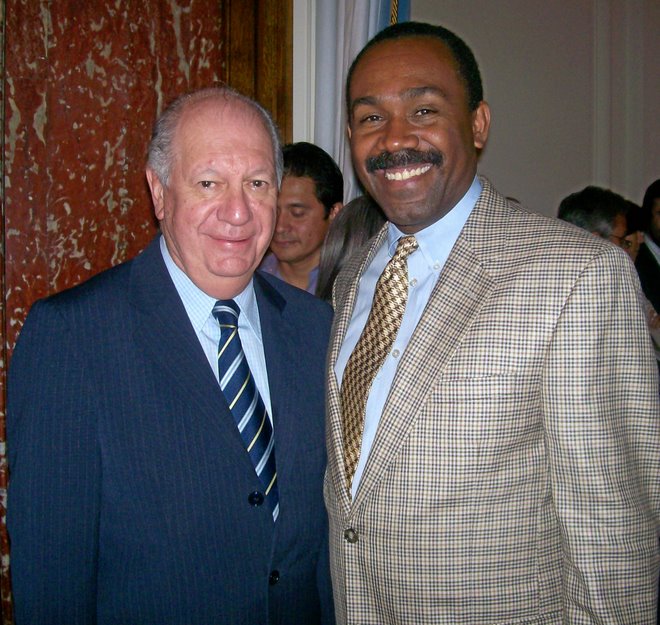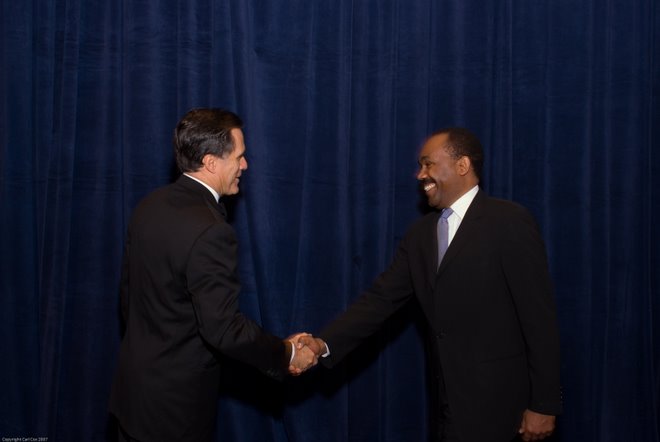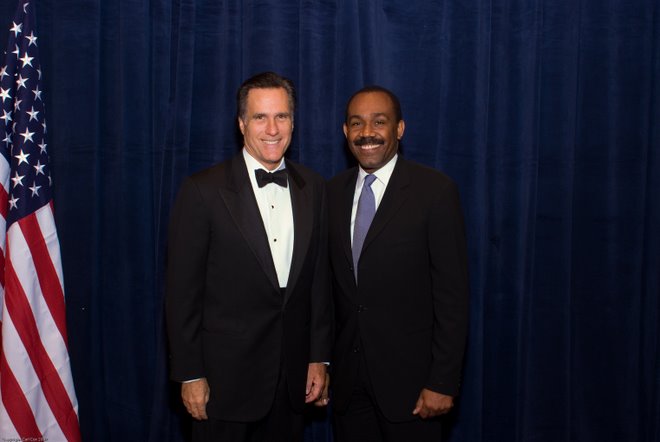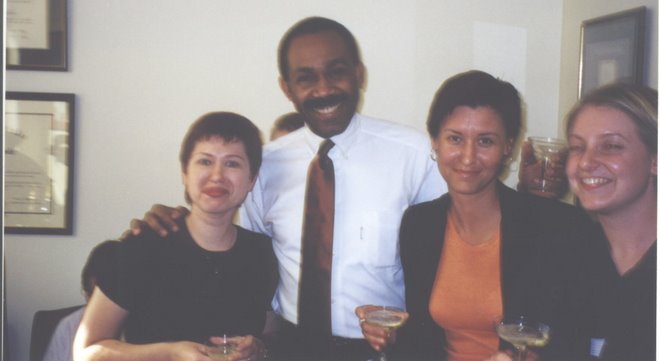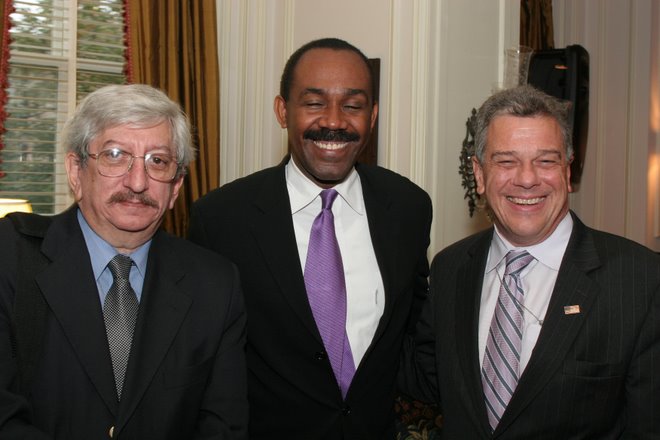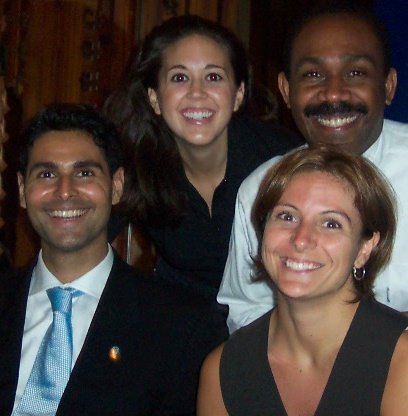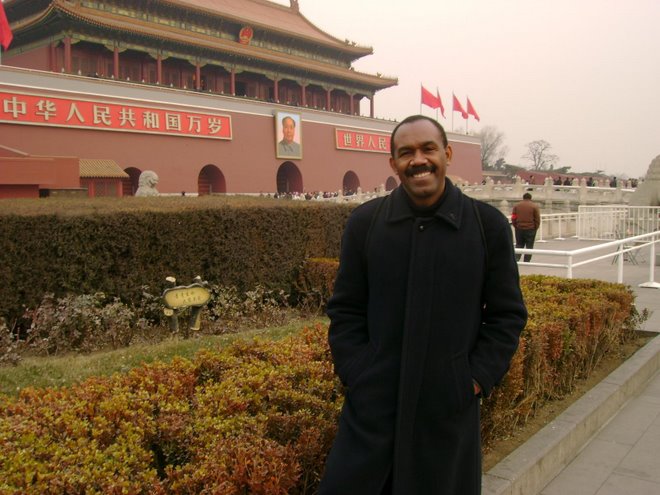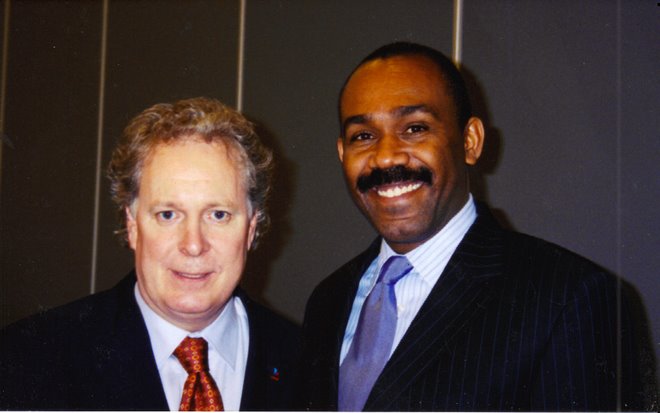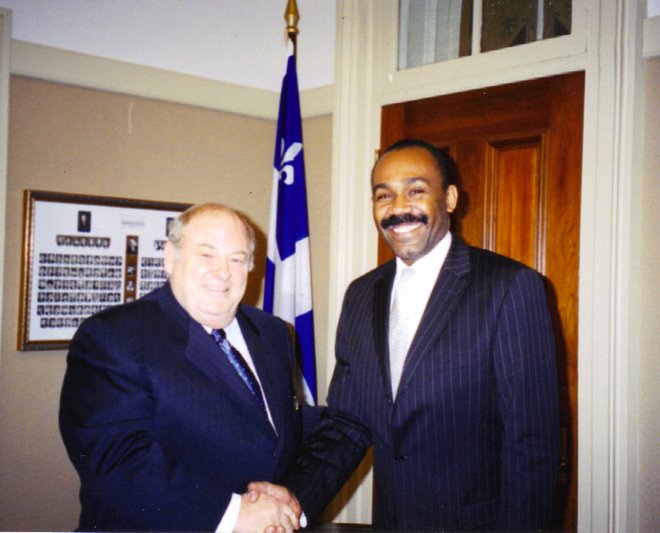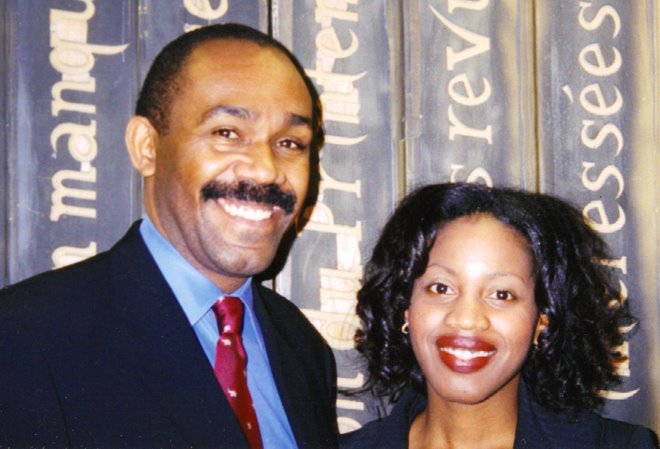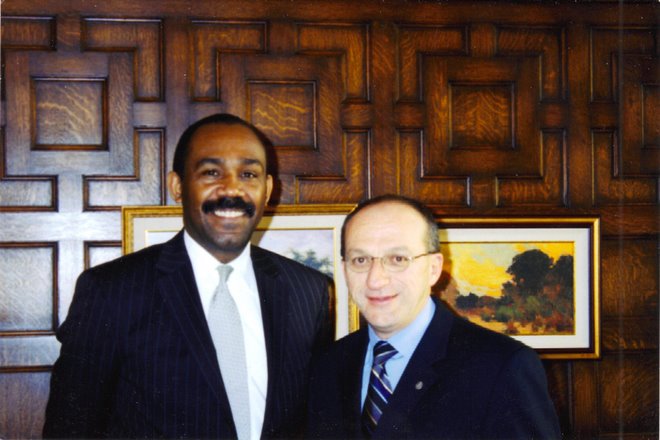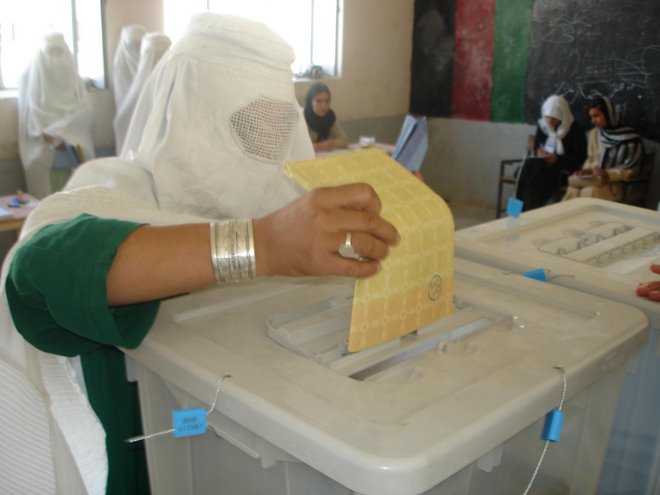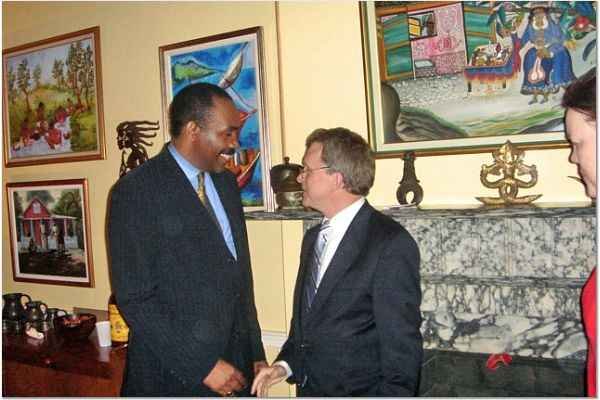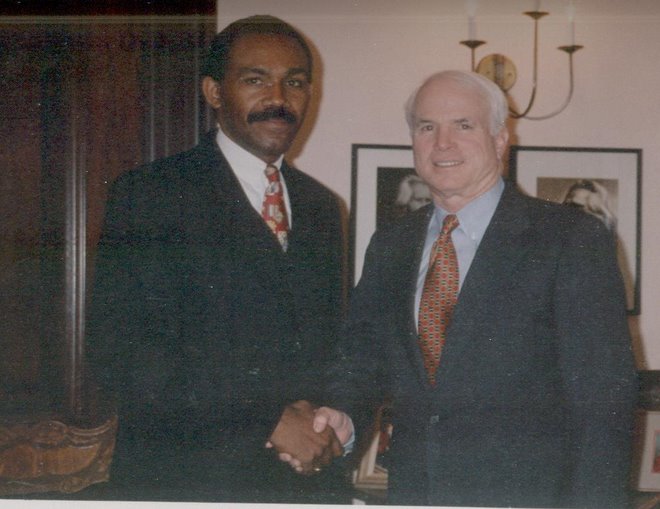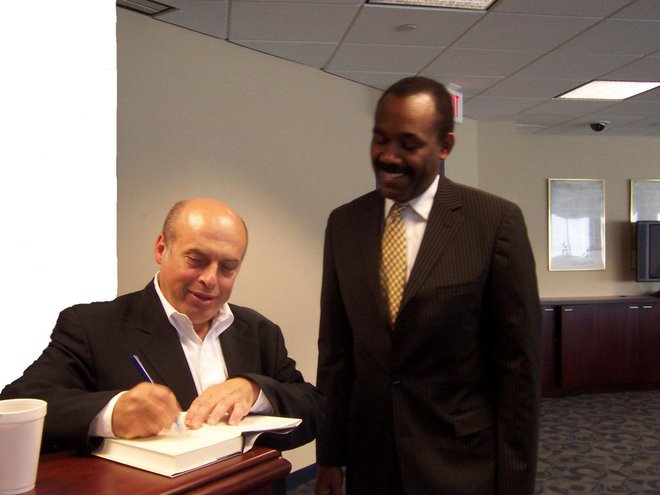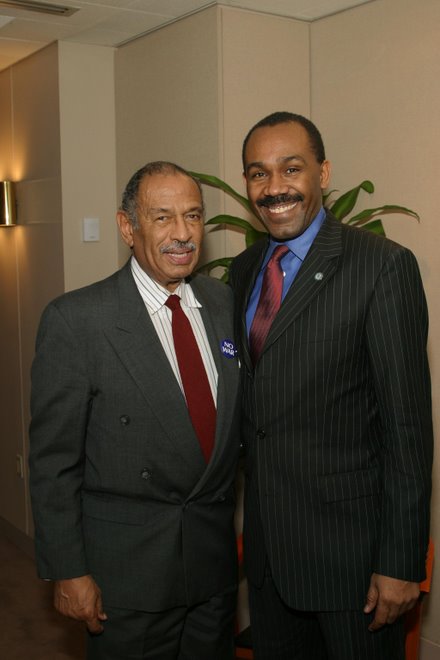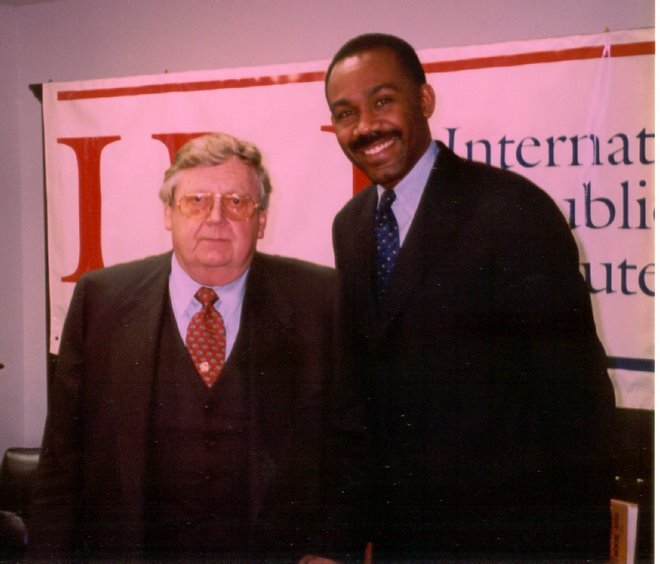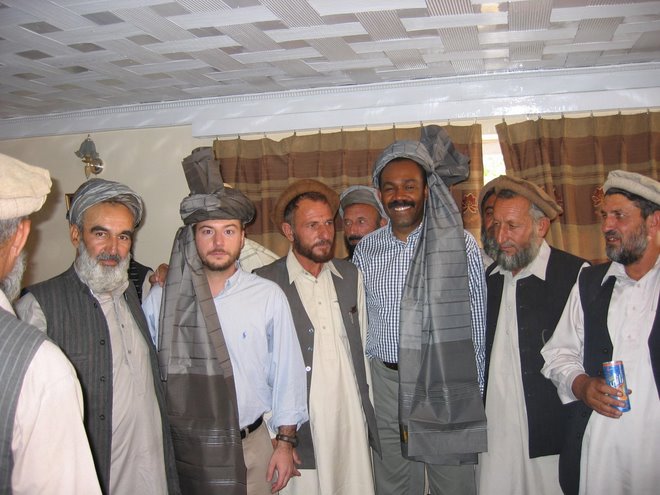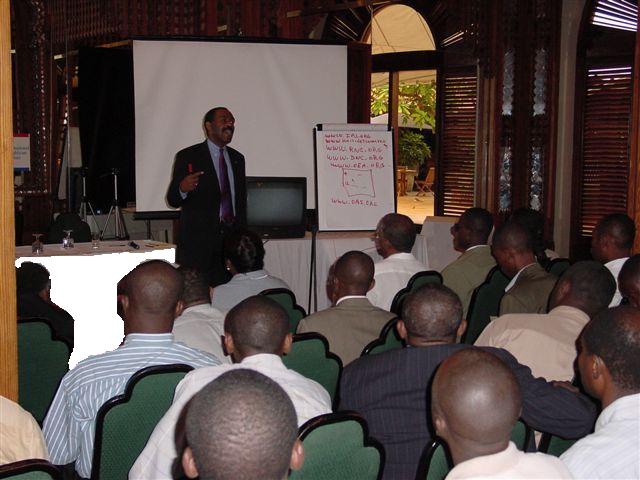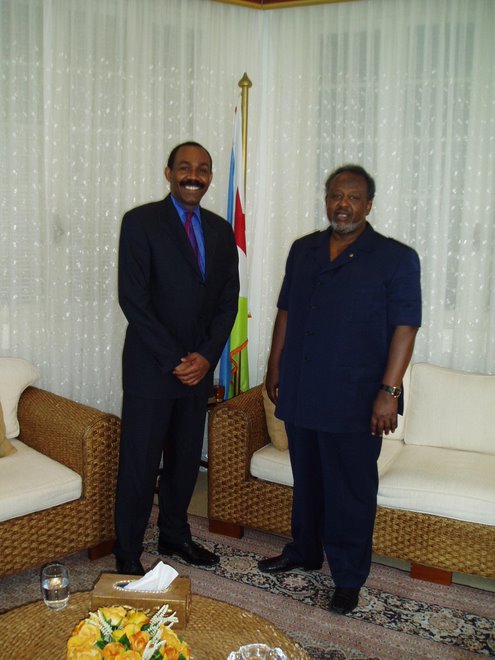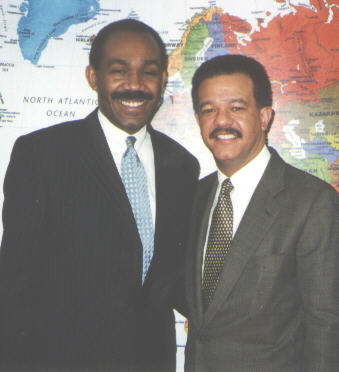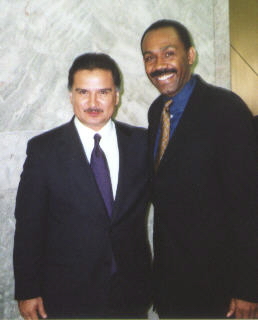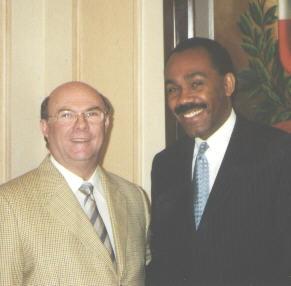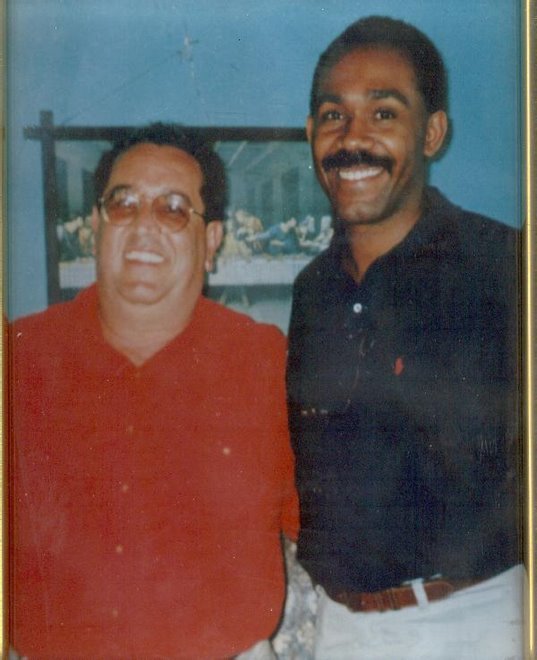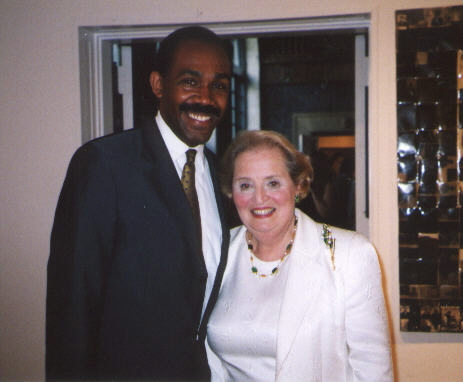Il existe en République dominicaine tout un édifice idéologique qui alimente ce que j'appelle la "légende noire d'Haïti" (par analogie à la légende noire des Espagnols initiée par Las Casas). Disons, d'entrée de jeu, que ces sentiments antihaïtiens et les actes parfois violents auxquels ils ont conduit, ont traversé l'histoire dominicaine depuis le XIXe siècle. Ils ont eu leur heure de gloire au XXe siècle sous la dictature de Trujillo et au temps de la dictablanda néo-trujilliste de Balaguer. Ils continuent d'exister aujourd'hui, en ce début de XXIe siècle, mais, selon beaucoup d'analystes, sous une forme moins virulente, et surtout, dans des couches de moins en moins étendues de la société dominicaine. Fort heureusement, tout comme il y a eu des fleurons de l'intelligentsia dominicaine à mettre leur érudition au service des dictatures et de l'oligarchie dominicaine pour théoriser et monter cet appareil idéologique, fondement de l'ultranationalisme conservateur et de l'antihaïtianisme forcené, de même, et il faut le souligner à l'eau forte, il y a eu, parmi nos voisins, de nombreux intellectuels, artistes, éducateurs, militants des droits humains, qui se sont attelés, avec courage, lucidité et honnêteté, à déconstruire cet appareil idéologique et à démystifier ce mépris et cette peur d'Haïti, brandis comme un épouvantail anachronique par des opportunistes de tous bords.


D'un côté comme de l'autre, les noms seraient trop nombreux pour être tous cités ici. Retenons cependant ceux des théoriciens Manuel Arturo Peña Batlle , Joaquin Balaguer Ricardo , Angel Lockward, dans le premier, et ceux d'historiens et de sociologues tels Frank Moya Pons et Ruben Silié Valdez , dans le second, auxquels l'on doit ajouter, avec les nuances qui s'imposent, les noms de Juan Bosch et de Leonel Fernandez Reyna, ce dernier héritier à la fois de Balaguer et de Bosch.
Ceci dit, l'on peut donc comprendre toute la portée de la déclaration de l'ambassadeur Silié ce mercredi 18 janvier 2012, lors de l'annonce faite par le chancelier Laurent Lamothe que le nom finalement adopté pour le campus de Limonade était celui de « Université Roi Henri 1er ». Avec force et un tantinet agacé, l'ambassadeur Silié a dit en substance : " Nous avons tourné la page de l'histoire. Nous ne laisserons, Monsieur le Ministre, aucune petitesse se mettre en travers de la route sur laquelle nous voulons avancer.... Nous sommes ici pour réaffirmer notre solidarité, la solidarité du président Leonel Fernandez et du peuple dominicain avec le peuple haïtien..." .
En constatant les tergiversations et remous provoqués sur l'île par le choix d'un nom pour cette université, don de la République dominicaine à la République d'Haïti, en constatant l'inconfort provoqué en Haïti par le don lui-même, à cause de toute une symbolique qui lui est attachée -, à tort ou à raison -, en constatant qu'il a fallu une note de la chancellerie haïtienne, remise par le chancelier en personne pour calmer les esprits, en constatant l'écho irrité que cette guerre des noms a eu dans la presse dominicaine , nous ne pouvons que prendre acte, ambassadeur Silié, que la page de l'histoire malheureusement n'a pas encore été tournée, ni d'un côté, ni de l'autre...
Pour atteindre l'altitude où nous convie à voler l'ambassadeur Silié, il y a des prérequis. Il faudrait commencer par connaître en profondeur nos histoires, inextricablement liées, analyser sans passion les moments où elles s'entrecroisent, nous découvrir mutuellement , patiemment et avec objectivité, pour nous enfin tisser des liens solides sur la base du respect mutuel, de l'empathie et de la solidarité humaine, et au niveau de nos deux Etats, du respect des engagements librement consentis au bénéfice de nos deux peuples. Je ne suis pas sûre que nous ayons tous mis nos devoirs au propre.
Argumentaire de l'idéologie antihaïtienne. Ce que tout Haïtien devrait savoir.
L'idéologie antihaïtienne fait appel à des arguments d'ordre historique, politique, économique, social, culturel et moral. La thèse à relents racistes qu'elle défend est simple : « Haïti représente un danger pour la sécurité nationale et la survie même du peuple dominicain. Les élites et les dirigeants haïtiens ont toujours caressé le rêve impérialiste d'une unification de l'île. Ces visées impérialistes haïtiennes, héritées de Toussaint Louverture et maintenues dans toutes les Constitutions haïtiennes (Balaguer dixit), sont appuyées aujourd'hui par un secteur de la communauté internationale. Elles se réalisent par une haïtianisation progressive et efficace de l'espace territorial, social et culturel dominicain, à travers l'invasion pacifique de hordes de migrants haïtiens, qui, avec leur cortège de maux ataviques, menacent de pollution et de dilution l'essence même de la dominicanité. L'Haïtien, qui revendique sa négritude, sa langue créole et sa religion vaudou, est l'antithèse du Dominicain, qui se définit comme Blanc, hispanophone et catholique. En bref, la barbarie contre la civilisation. »
Voici en quelques mots la thèse, basée sur la peur et la haine de l'Haïtien, qui a été assenée, inculquée ouvertement ou subtilement, à des générations et des générations de Dominicains. Beaucoup d'amis Dominicains m'ont avoué avec tristesse et embarras, qu'il y a à peine une trentaine d'années, pour effrayer leurs rejetons espiègles, les parents menaçaient de faire venir « el Cuco negro, el Haitiano » qui mangeait les enfants désobéissants . Version dominicaine de notre loup-garou !
Encore aujourd'hui, différents éléments de cette thèse sont ressassés journellement et impunément dans certains médias dominicains. Fruit de ce lavage de cerveau, la seule énonciation du mot « haïtien » évoque encore des menaces individuelles et collectives. « !Haitiano del diablo! » est une injure suprême en République dominicaine -tout comme d'ailleurs « espèce d'Haïtien ! » l'est dans les Antilles françaises et ailleurs, dans certains pays du Grand Nord récepteurs d'immigrants venus de chez nous. Nous devons savoir tout cela, non pas pour monter sur nos grands chevaux et tenter de rendre oeil pour oeil, dent pour dent, mais plutôt pour comprendre certaines attitudes et comportements de nos voisins dominicains. La question des relations haïtiano-dominicaines est très complexe, et nous ne pouvons pas nous y engouffrer tête baissée, sans bien appréhender toutes les dimensions de la problématique. Nous devons arriver à dépasser les aigreurs et rancunes qui entachent ces relations, mais encore faut-il savoir en quoi elles consistent et quels sont leurs soubassements idéologiques.
La plupart d'entre nous, Haïtiens scolarisés d'aujourd'hui, sont le produit d'un système éducatif bancal et d'un curriculum d'histoire incohérent, et nous nous complaisons, par paresse ou par condescendance, à tout ignorer de notre voisin immédiat, ou à en avoir une connaissance toute superficielle et incomplète. Anyen pa anyen, tout voum se do, n'est-ce pas ? Ce n'est certes pas la meilleure attitude pour établir des rapports équilibrés avec des gouvernements et une société, qui eux, nous observent et nous analysent sous toutes nos coutures.
Nous devrions savoir qu'il y a des concepts, des slogans et des mots sensibles ou même tabous en République dominicaine et que l'on ne prononce pas sans provoquer une levée de boucliers. Nos autorités, femmes et hommes d'Etat qui, avec les meilleures intentions du monde, se sont aventurés, par légèreté ou naïveté, à les prononcer, l'ont vite compris à leurs dépens. « Union des deux peuples », « unification/unité de l'île », « l'île une et indivisible », « binational », etc. sont de ceux-là. Il y a des noms-symboles qui sont honnis là-bas : Toussaint, Dessalines, Christophe, Boyer, Rivière Hérard, Soulouque, etc. sont de ceux-là. Il y a des faits historiques qui sont utilisés pour étayer la thèse ultranationaliste du danger dû à la sauvagerie et la violence haïtiennes. Les massacres et abus indéniables commis par les chefs militaires et la soldatesque haïtienne lors des campagnes de l'Est sont de ceux-là. Los desguellos de Moca y Santiago, i.e. le massacre de colons français et espagnols par Christophe et Dessalines en 1805, perdurent dans la mémoire collective dominicaine comme une blessure et un affront -veut-on nous faire croire- même si la République dominicaine n'existait pas encore en tant qu'entité politique et que la partie est de l'île était alors sous la férule du général Ferrand.
Qu'importe, ces cruautés, pour les tenants les plus extrémistes de l'ultranationalisme dominicain, seront vengées en 1937 par le général Rafael Leonidas Trujillo Molina.
Ces points sensibles du voisin, nous devons les connaître, et éviter d'apporter gratuitement ou à notre insu, de l'eau au moulin des antihaïtianistes et ultranationalistes dominicains qui crient aisément à la provocation et sont constamment à la recherche de preuves de la mauvaise foi haïtienne. Nous devons sortir de notre amateurisme et de notre menfoubinisme dans la gestion des choses de l'Etat et en particulier, en ce qui a trait à la République dominicaine. Prenons nos voisins au sérieux, et nous avec ! Comme nous le démontre cette regrettable polémique entre Haïtiens et Dominicains autour du nom à donner à cette université flambant neuve, « Université du Roi Christophe », ou « Université Roi Henri 1er », « Bibliothèque Juan Bosch » et « Auditorium Anténor Firmin », les noms ne sont jamais innocents et l'acte de nommer charrie toujours une charge émotionnelle, un contenu symbolique et politique dont nous devrions bien évaluer la profondeur et les enjeux, afin de manier ces symboles avec adresse, élégance et en toute connaissance de cause.
Je voudrais conclure en réaffirmant ma conviction que nous devons, Haïtiens et Dominicains, travailler résolument à améliorer les relations entre nos deux pays. Je voudrais aussi insister sur l'importance à donner à la réappropriation de notre mémoire pour la construction d'un nouveau citoyen. Cela se fera en grande partie à travers l'enseignement et la vulgarisation d'une histoire revisitée. Il faut adapter notre curriculum d'histoire, nos manuels et livres de textes aux besoins de l'heure. Les erreurs du passé ne doivent pas, ne doivent plus servir à alimenter les haines d'aujourd'hui. Celles qui déchirent notre société et celles que nous dirigeons contre nos voisins.
Déconstruisons les légendes noires, celles que nous fabriquons et celles dont nous sommes victimes. Nos historiens et autres spécialistes des sciences sociales doivent être mis à contribution dans cette démarche ô combien nécessaire !
Concernant la République dominicaine, je voudrais terminer par un appel à l'intention de l'Etat et des segments concernés de la société haïtienne. Tout comme en République dominicanie, l'Etat, certaines universités et certains particuliers se sont efforcés de compiler et traduire les meilleurs penseurs, idéologues et auteurs haïtiens, nous devrions nous aussi avoir une politique bien pensée de diffusion de connaissances sur la République dominicaine et nos autres voisins de la Caraïbe qui visera l'école primaire et secondaire, les universités, les médias, les cadres de l'administration publique et les membres du secteur privé -, hommes d'affaires, libraires, etc. Certains médias de l'île se sont déjà assigné cette mission éducative et nous profitons pour saluer leurs efforts . Il existe aussi de louables initiatives privées haïtiennes qui visent à produire des réflexions et de la connaissance scientifique sur notre voisin immédiat; nous pouvons citer le Centre Pétion-Bolivar, le LAREHDO (Laboratoire des relations haïtiano-dominicaines). Certaines ONG comme le GARR (Groupe d'Appui aux Refugiés et aux Rapatriés), le Sant Pon, ou des associations bénévoles de base, comme le Réseau frontalier Jeannot Succès (RFJS) accumulent, grâce à leur expérience sur leur terrain, une connaissance pratique de la dynamique haïtiano-dominicaine qui pourrait être mise à profit par la société at large. Mais ces institutions et organisations tendent à s'essouffler, faute de ressources, et pourquoi ne pas l'avouer, faute d'intérêt et de support dans la société haïtienne. Il faudrait les renforcer pour leur permettre d'accomplir un travail, ô combien utile ! à un moment où la fusée dominicaine file déjà à vive allure. Si nous ne nous réveillons pas, nous risquons de rester éternellement un satellite sans orbite propre, un vaisseau fantôme, prêt à sombrer dans l'océan de nos irresponsabilités.
- · Pena Batlle, Manuel Arturo. 1946. Historia de la cuestión fronteriza dominico-haitiana. Casa ed. Luis Sanchez Andujar, Ciudad
- Balaguer, Joaquin. 1998. La Isla al Revés. Haiti y el Destino Dominicano. Santo Domingo: Editoria Corripio. 10e edition 1998 [1a edicion 1983]
- Lockward Angel. 1999. La Isla al Derecho... y cada uno en su lado. Santo Domingo: Editora Centenario. 3a edición
- Moya Pons, Frank. 1972. La dominación haitiana. Santiago UCMM.
- Manual de Historia Dominicana. Santiago UCMM 1995. The Dominican Republic: A National History. New York: Hispaniola Books
- Silié, Ruben y Maria Filomena Gonzalez Canalda. 1998. Libro de Ciencias Sociales, Séptimo Curso. Secretaria de Estado de Educación. Santo Domingo: Editora Impretur S.A
- Bosch, Juan 1964. The unfinished Experiment. Democracy in the Dominican Republic. New York.
- 1971. Composición social dominicana. Santo Domingo: Editora Tele-3
- 1986. De Cristobal Colon a Fidel Castro. Santo Domingo: Edit. Alfa y Omega.
- Télévision nationale d'Haïti, mercredi 18 janvier 2012
- El Nacional. Gobierno de Haití cambia el nombre academia donó RD. //3noticias.com,20-01-12
- José Antonio Martinez Rojas. Universidad La Limonade: intolerancia y desconsideraciones. www,hoy.com.do 20-01-201
- Corroboré par le témoignage d'une dominicaine de 66 ans sur http://www.espacinsular.org/spip.php?article13793
For more see: You are nobody: http://cronkite.asu.edu/buffett/dr/
F
F
















































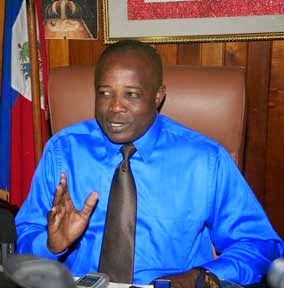

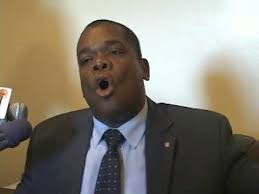
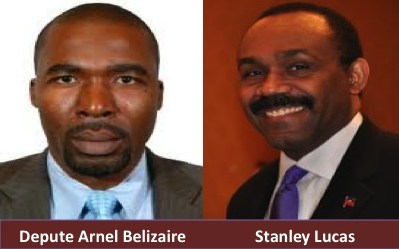






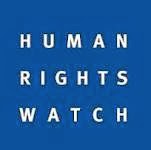
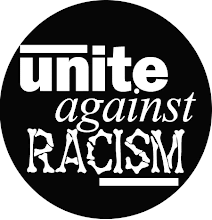


































































-3.jpg)


.jpg)





.jpg)











.jpg)
.jpg)
.jpg)
.jpg)
.jpg)
.jpg)


















